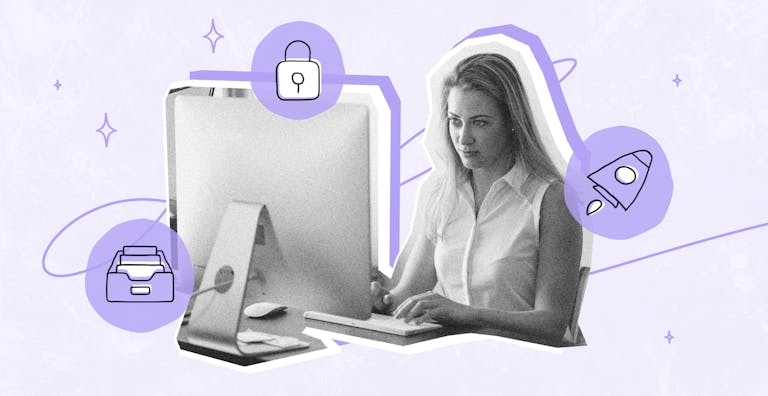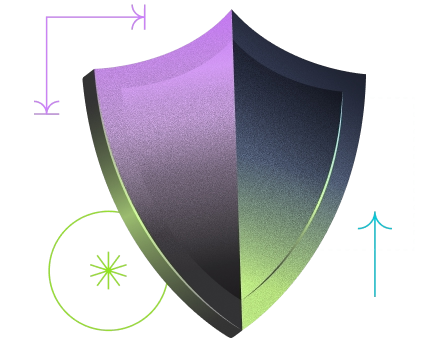In today's fast-paced business world, first impressions matter - especially when welcoming new talent to your organization. The employee onboarding process represents a critical touchpoint that sets the tone for a new hire's experience. Yet many companies still rely on outdated, paper-heavy processes that create unnecessary friction, delays, and administrative burdens.
At Yousign, we've seen how digital onboarding enhanced with electronic signatures transforms this experience, creating smoother transitions for new employees while saving organizations significant time and resources.
What is Digital Employee Onboarding?
Digital onboarding is the process of integrating new employees into an organization using digital tools and platforms instead of traditional paper-based methods. A comprehensive digital onboarding strategy typically includes:
- Digital employment contracts and policy acknowledgments: Replace paper contracts with digital versions that can be reviewed, electronically signed, and automatically stored in your HR system. This eliminates the need for printing and scanning while creating a legally binding agreement that's accessible to both parties.
- Automated document workflows: Create predefined sequences where documents move automatically from preparation to approval, signature, and storage based on triggers or timelines. These workflows reduce manual handoffs, prevent documents from being overlooked, and provide visibility into the status of each document.
- Electronic signature capabilities: Enable new hires and internal stakeholders to legally sign documents from any device without printing or scanning. Advanced solutions include identity verification, tamper-evident technology, and comprehensive audit trails to maintain document integrity and compliance.
- Self-service information portals: Provide centralized digital hubs where new employees can access company information, complete tasks, and find answers to common questions. These portals reduce repetitive inquiries to HR, empower employees to solve problems independently, and ensure consistent delivery of important information.
- Digital training modules: Deploy interactive learning experiences that new employees can complete at their own pace before or during their first days. These modules can include videos, quizzes, and simulations that track progress and ensure comprehension of important company policies and procedures.
- Virtual introductions to team members: Facilitate digital meet-and-greets through video profiles, team directories, or scheduled video calls to help new hires build connections quickly. This is especially valuable for remote or hybrid teams where in-person interactions may be limited, helping new employees feel connected to the organization from day one.
The centerpiece of effective digital onboarding is the electronic signature. This technology enables new hires to securely sign all necessary employment documents digitally, eliminating the need for printing, scanning, or physically returning paperwork.
The Impact of Electronic Signatures on Employee Onboarding
Transitioning from paper-based processes to electronic signatures creates a ripple effect of improvements throughout the entire onboarding journey. By removing the friction of physical paperwork, organizations can fundamentally transform how new employees are welcomed and integrated into the company. The benefits extend far beyond simply replacing ink with pixels—electronic signatures catalyze a complete reimagining of the onboarding experience, creating value for both the organization and its newest team members.
Let's explore the most significant ways electronic signatures revolutionize the employee onboarding process:
Accelerated Time-to-Productivity
The traditional onboarding process typically involves a mountain of paperwork that new employees must complete on their first day. This administratively heavy approach can consume valuable time that could otherwise be spent on meaningful orientation activities.
With electronic signatures, new hires can review and sign documents before their start date, from anywhere and on any device.
NB:
Pre-boarding with electronic signatures allows new employees to complete administrative tasks before day one, so they can focus on more valuable activities when they start.
Enhanced Candidate Experience
First impressions are crucial. When a new hire experiences a smooth, modern onboarding process, it reinforces their decision to join your organization. Conversely, an outdated, paper-heavy process can create doubt about a company's technological competence and forward-thinking culture.
Traditional Onboarding | Digital Onboarding with E-Signatures |
|---|---|
Stacks of paperwork on day one | Pre-completed documentation |
Hours spent filling forms | Focus on meaningful orientation |
Manual data entry errors | Automated information capture |
Waiting for document processing | Instant completion confirmation |
Physical storage requirements | Secure digital document archive |
Improved Compliance and Security
Employment documentation often contains sensitive personal information and must comply with various regulatory requirements. Electronic signature solutions that are purpose-built for business use provide enhanced security features and compliance benefits:
- Audit trails that record exactly when and where documents were signed
- Tamper-evident technology that ensures document integrity
- Identity verification methods that confirm signers are who they claim to be
- Secure storage with encryption and access controls
- Compliance with key regulations like eIDAS in Europe and ESIGN/UETA in the US
Important:
When selecting an electronic signature solution for HR processes, ensure it meets the specific compliance requirements for employment documentation in your region.
Electronic Signature Types for HR Documentation
Understanding the different types of electronic signatures is crucial for implementing them effectively in your onboarding process:
- Simple Electronic Signatures (SES) - Basic signature methods like typing your name or drawing your signature. Suitable for lower-risk HR documents like acknowledgment of receipt of policies.
- Advanced Electronic Signatures (AES) - Provides stronger authentication of signer identity and document integrity. Appropriate for employment contracts and most HR documentation.
- Qualified Electronic Signatures (QES) - The highest level of electronic signature with the strongest legal value, equivalent to handwritten signatures across the EU. May be required for certain high-value employment contracts or in specific jurisdictions.
For more detailed information on choosing the right electronic signature type, check out our guide on what signature to choose for different business scenarios.
Try electronic signature for free for 14 days
Essential Documents for Electronic Onboarding
Almost all onboarding documents can be digitized and signed electronically. The most common include:
- Employment contracts and offer letters
- Confidentiality agreements and NDAs
- IT policies and acceptable use agreements
- Code of conduct acknowledgments
- Tax forms and documentation
- Direct deposit authorizations
- Benefits enrollment forms
- Health and safety policies
- Employee handbook acknowledgments
Good to know:
By creating templates for these standard documents in your electronic signature platform, you can quickly generate personalized versions for each new hire with just a few clicks.
Implementing Digital Onboarding with Electronic Signatures
Moving from traditional paper-based onboarding to a digital process with electronic signatures requires thoughtful planning and execution. While the technology itself is relatively straightforward to adopt, the real challenge lies in designing workflows that align with your organization's specific needs and culture. A successful implementation involves much more than simply choosing software—it requires rethinking your entire approach to welcoming new employees.
The good news is that with the right strategy, most organizations can transition to digital onboarding with minimal disruption and start seeing benefits almost immediately. Here's a comprehensive roadmap to guide your implementation:
1. Select the Right Electronic Signature Solution
When evaluating electronic signature providers for your onboarding process, consider these key factors:
- Legal compliance across all regions where you hire
- User experience for both HR staff and new employees
- Integration capabilities with your existing HR systems
- Security features and data protection measures
- Customization options for branding and workflows
- Mobile accessibility for signing on any device
- Support and training resources
Yousign offers all these features with a user-friendly interface specially designed for streamlined HR processes and maximum adoption.
2. Design Your Digital Workflow
Effective implementation requires mapping out your onboarding document flow:
- Document preparation - Create templates for all standard onboarding documents
- Approval routing - Define who needs to approve documents before sending
- Signature sequencing - Determine who signs in what order
- Automatic reminders - Set up notifications for pending signatures
- Integration touchpoints - Connect with HRIS, payroll, and other systems
- Document storage - Establish protocols for secure archiving
3. Test and Optimize
Before fully launching your digital onboarding process:
- Run pilot tests with a small group of new hires: Select a diverse sample of 5-10 upcoming new employees across different departments to test your digital onboarding process. This controlled environment allows you to identify issues before full-scale implementation while limiting potential disruption. Consider including both tech-savvy and less technically inclined participants to ensure the process works for everyone.
- Gather feedback on the user experience: Create structured opportunities for feedback through surveys, one-on-one interviews, and observation sessions. Ask specific questions about clarity of instructions, technical difficulties encountered, and overall satisfaction with the process. Pay particular attention to moments of confusion or frustration, as these represent prime opportunities for improvement.
- Measure completion times and identify bottlenecks: Track how long each step of the onboarding process takes to complete, comparing it to your previous paper-based process. Use analytics provided by your electronic signature platform to identify documents that take longest to complete or steps where signing delays occur. This data-driven approach reveals exactly where your process needs streamlining.
- Adjust workflows based on findings: Make iterative improvements to your digital onboarding process based on both qualitative feedback and quantitative metrics. This might involve simplifying complex forms, clarifying instructions, reordering document sequences, or adding helpful context to specific sections. Document these changes to track improvements over time and establish best practices.
- Train HR team members on the new process: Develop comprehensive training materials and sessions for your HR team, ensuring they understand both the technical aspects of the platform and the revised workflows. Create troubleshooting guides for common issues and establish who will serve as internal system experts. Remember that your HR team's confidence with the system directly impacts new employees' experiences.
NB:
Even the best technology requires proper implementation. Invest time in designing intuitive workflows that make sense for your specific organizational needs.
Legal Considerations for Electronic Onboarding
While electronic signatures are legally valid for employment documents in most jurisdictions, it's important to understand the specific requirements in your region.
In the European Union, the eIDAS regulation provides a clear framework for electronic signatures, while in the United States, the ESIGN Act and UETA establish their legal status. However, some jurisdictions may have additional requirements for employment-specific documentation.
Key legal considerations include:
- Consent - Ensure employees explicitly consent to use electronic signatures
- Accessibility - Provide alternatives for employees who cannot use digital tools
- Recordkeeping - Maintain proper records of all electronically signed documents
- Data protection - Comply with privacy regulations like GDPR for personal data
- Local employment laws - Check for any country-specific requirements
For sensitive or high-value employment contracts, consider using advanced or qualified electronic signatures to provide additional legal assurance. When hiring internationally, businesses should also ensure their electronic signatures for multilingual contracts support the languages of all signers to avoid misunderstandings and ensure legal clarity.
Looking to streamline other business processes? Learn about forms and contracts automation solutions on our blog.
ROI of Digital Onboarding with Electronic Signatures
Implementing electronic signatures in your onboarding process delivers substantial returns across multiple dimensions:
Cost Reduction
Digital onboarding eliminates expenses for printing, paper, ink, mailing, and physical storage. Administrative labor costs decrease as HR professionals spend less time preparing, tracking, and processing paperwork, allowing them to focus on higher-value activities.
Efficiency Gains
New hires complete documentation quickly before their start date, arriving ready to engage in meaningful work rather than paperwork. This acceleration removes administrative bottlenecks that often delay crucial first steps like system access provisioning and equipment setup.
Enhanced Employee Experience
Digital onboarding creates a positive first impression that can boost retention and engagement. New employees perceive organizations with streamlined, technology-enabled processes as more modern and respectful of their time, leading to higher satisfaction with the onboarding process.
Long-Term Benefits
As your electronic signature platform integrates with other HR systems, you'll discover additional opportunities for automation throughout the employee lifecycle. The data captured also creates valuable analytics opportunities to refine your hiring and onboarding processes.
Organizations typically report substantial positive returns within the first year of implementation, with the most significant benefits coming from reduced administrative time, faster employee productivity, and improved talent retention.
Important:
While the financial ROI is compelling, don't overlook the strategic value of creating a modern, efficient experience that aligns with your employer brand and demonstrates your commitment to innovation.
Frequently Asked Questions About Electronic Signatures for Digital Employee Onboarding
Are electronic signatures legally binding for employment contracts?
Yes, electronic signatures are legally binding for employment contracts in most countries, including across the EU (under eIDAS) and the US (under ESIGN and UETA).
What if an employee doesn't have access to digital tools?
While rare, you should have an alternative process for employees without digital access. However, most electronic signature solutions work on any device with internet access.
How secure are electronic signatures for sensitive HR information?
Enterprise-grade electronic signature solutions offer robust security features including encryption, access controls, and tamper-evident technology that often exceed the security of paper documents.
Can electronic signatures work with our existing HR software?
Most leading electronic signature solutions offer integrations with popular HRIS and ATS platforms, creating seamless workflows between systems.
How do we ensure global compliance when hiring internationally?
Select an electronic signature provider with global compliance capabilities that meets the highest standards across all regions where you operate.
How Yousign Enhances Your Digital Onboarding
At Yousign, we've designed our electronic signature solution specifically with business processes like employee onboarding in mind. Our platform offers:
- Simple, intuitive interface that requires no training for new employees
- Customizable templates for all your standard onboarding documents
- Bulk sending capabilities for onboarding multiple employees simultaneously
- Automated reminders to keep the process moving
- Mobile optimization for signing on any device
- Comprehensive audit trails for compliance and recordkeeping
- Enterprise-grade security to protect sensitive employee information
- EU compliance with eIDAS regulation for electronic signatures
By implementing Yousign's electronic signature solution in your onboarding process, you can create a modern, efficient experience that reflects well on your organization while saving significant time and resources.
Transforming Your Onboarding Process for the Digital Age
The shift to digital onboarding represents more than just a technological upgrade—it's a fundamental reimagining of the employee experience from day one. By eliminating paper-based friction and creating smooth, digital workflows enhanced with electronic signatures, organizations can set the tone for a modern, efficient workplace culture.
As remote and hybrid work arrangements become more common, a streamlined digital onboarding process is no longer a luxury but a necessity for competitive organizations. Those who embrace this transition will benefit from faster hiring cycles, reduced administrative burdens, and employees who can contribute value more quickly.
For more insights on boosting workplace efficiency, check out our article on time management strategies for productivity.
Ready to Transform Your Employee Onboarding?
Try Yousign today.








